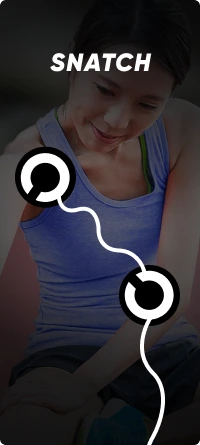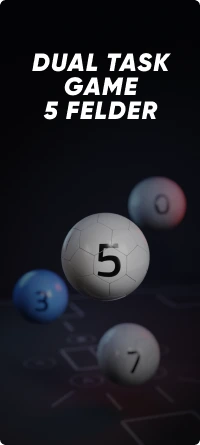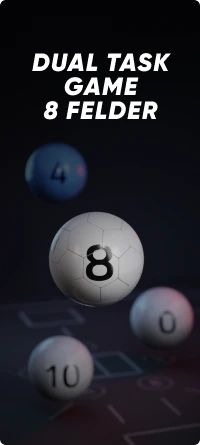Vision
Perception first
Imagine,
you receive …
… information
quicker.
Your
benefits
as …
An Athlete
Visual skills are crucial for athletes because it enables them to quickly assess the game’s dynamics, anticipate opponents’ actions, and make split-second decisions that can lead to scoring opportunities and defensive effectiveness.
A student
Visual skills are important for students as they aid in efficient reading, comprehension, and information retention, ultimately enhancing learning outcomes and academic success.
A best ager
Visual skills are important for elderly people as they contribute to maintaining independence and safety by helping recognizing hazards and navigating their environment effectively.
A first responder
Visual skills are crucial for first responders and soldiers as they help in quickly assessing situations, identifying potential threats, and making rapid, accurate decisions in high-stress and often dangerous environments, which can be a matter of life and death.
What is vision?
Definition
Sight is our dominant sensory system. Approximately 80% of perceived information comes from the visual system. Photoreceptors on the retina of the eye convert light in the environment into electrical signals. Rods perceive brightness and motion, while cones are responsible for color perception and details. The pupil regulates the amount of light, and through the lens, we can focus. Six major eye muscles control eye movement. The optic nerve transmits signals to the brain, where images are generated. Vision allows us to recognize colors, shapes, movements, and speeds, making it essential for interaction with the environment in every aspect of life.


The downside of digitalization
Development
Vision changes with age. Starting around the age of 40, the flexibility of the lens decreases, leading to a condition known as presbyopia. Additionally, color perception, visual acuity, dark adaptation, and contrast sensitivity decline with age. Prolonged screen work, resulting in dry eyes and strained eye muscles, can accelerate this process. This significantly increases the risk of accidents in road traffic.
Regular exercises can help maintain and improve visual abilities in everyday life, sports, and the workplace. SKILLCOURT can assist you with this.
Vision is
a skill
It’s trainable
Approximately 30-50% of the neocortex and over 30 different brain areas are involved in the perception and processing of visual information. Vision is our primary source of information, making visual impairments and the decline of visual abilities have a significant impact on performance and health. To effectively train the visual system, the visual exercises on SKILLCOURT are based on the Skeffington model. This model encompasses the four areas of vision:
Eye movement
Eye mobility for visual perception
Accommodation
Adjustment of the eye lens for focusing
Binocular vision
Use of both eyes for spatial vision
Brain integration
Integration of visual information in the brain
Special exercises train the four areas and enhance the perception and processing of visual information. With the specially developed diagnostics, training progress can also be regularly evaluated
Visual
Exercises
On SKILLCOURT
SKILLCOURT includes a dedicated category for training visual abilities. Various games and levels require rapid perception of visual information, peripheral vision, or motion detection. Exercises for the visual system on SKILLCOURT include:
What people
say

I feel that the targeted vision exercises have improved my eyes. I feel more confident in sports and everyday life. Thank you, SKILLCOURT!
– Sarah U.

I was skeptical when I heard about vision training with SKILLCOURT, but after a few weeks, I am absolutely convinced. As an athlete, I can now react faster to changing game situations.
– Marc P.

I have been searching for a solution for a long time to relax my eyes after long working days. The SKILLCOURT has helped me relieve my eyes and reduce fatigue.
– Julia P.
Become a SKILLCOURT Partner
Are you interested in the SKILLCOURT and would like more information
on how you can integrate the training into your facility?
FA
Qs
Which changes the eyes undergo throughout life?
Starting around the age of 40, visual abilities such as visual acuity, dark adaptation, color perception, and contrast sensitivity begin to decline. Recent societal developments like prolonged screen work and associated eye muscle strain can accelerate this process.
Which age-related changes affect vision, and how can training with SKILLCOURT help prevent them?
As we age, the flexibility of the lens decreases, making it more challenging to see objects up close. Additionally, the retina and the underlying pigment epithelium can undergo structural changes, affecting color perception. Peripheral vision is also compromised as the field of view narrows with age.
Based on Skeffington’s four qualities of vision (eye mobility, binocular vision, accommodation, and brain integration), SKILLCOURT trains visual skills to improve vision and prevent visual impairments.
What role does screen work and digital devices play for our eyes?
Prolonged screen work requires strong contraction of the eye muscles to focus on short distances. Just like any other muscles, this can lead to muscle shortening and strain over extended periods, resulting in limitations in visual abilities such as visual acuity. Additionally, stress symptoms like burning, itching, or dry eyes may occur. The same applies to long screen times on mobile phones or tablets. The blue light emissions from digital devices also have a negative impact on the sleep-wake cycle.
How can SKILLCOURT prevent digital eye strain and maintain eye health?
Exercises on SKILLCOURT require eye mobility, binocular vision, accommodation, and brain integration, covering the primary functions of vision according to Skeffington. Specific exercises and levels challenge the eye and the visual system in terms of visual attention, motion perception, and peripheral vision. The training helps relax eye muscles, improve visual skills, and prevent visual impairments.
Which SKILLCOURT exercises help to test and sustainably influence vision?
The visual training exercises on SKILLCOURT include:
– Snatch
– Escape
– Eagle Eye
– Chase
– Chase 2
– Dual Task (5)
– Dual Task (8)
Furthermore, SKILLCOURT includes a series of diagnostic tests for analyzing visual acuity, contrast perception, and dynamic fixation.
Contact us
Are you interested in SKILLCOURT and would like more information on how to integrate the training into your facility? Then get in touch with us, and together we will develop a concept tailored to your needs!







